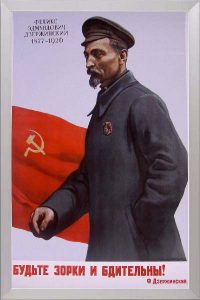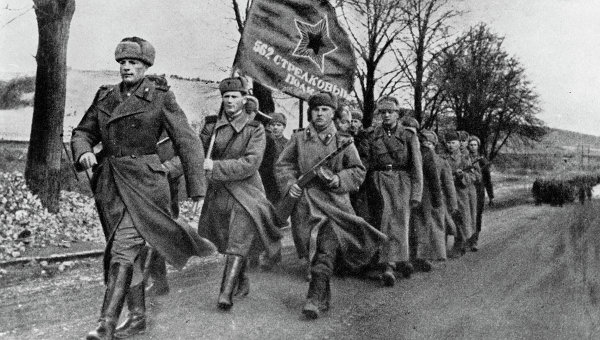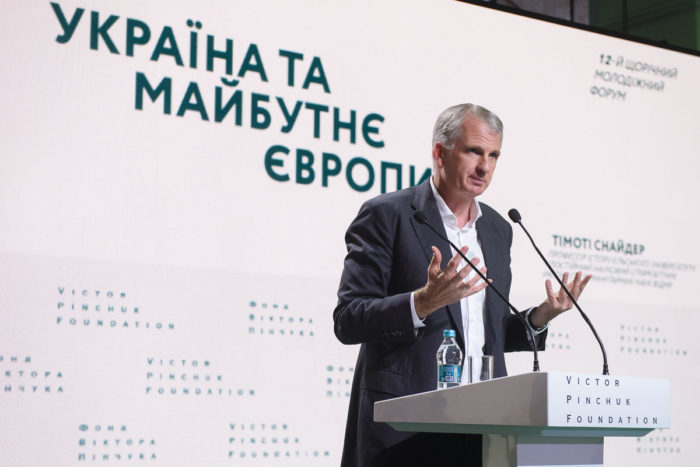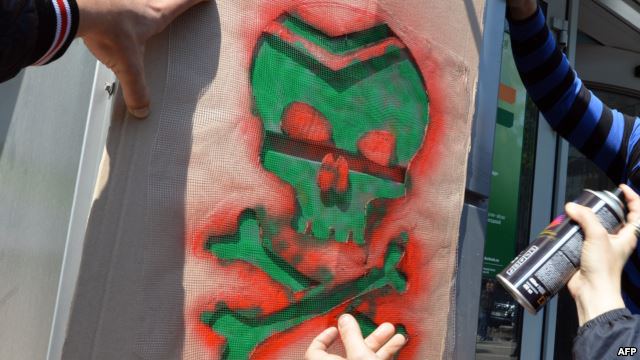
“Our finger of revolution has been stuck into China”
On October 7, 1929 Stalin, who had come to Sochi for his well-deserved multi-month vacation, sent a message with many questions to his stand-in in Moscow, Molotov (at the moment Molotov was a member of the Politburo, and the Secretary of the Central Committee of the All-Union Communist Party (Bolshevik)):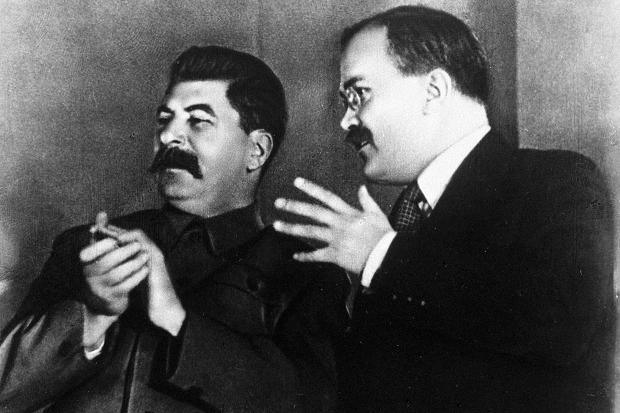
“China will be problematic for us. It seems to me it is time for us to switch to organizing a movement for revolution in Manchuria. Sending special operations groups into Manchuria to execute special missions intermittently is basically a good idea but that’s not what we need. Now is the time to escalate our strategy. We should organize two regiments of brigades consisting mainly of Chinese men, supply them with everything that is required (artillery, machine guns, etc.) place Chinese men at the head of the brigades and send them off to Manchuria with an assignment: to foment a rebellion within the Manchurian army, befriend and take under our wing reliable soldiers from those armies (dismissing the army itself after getting rid of the commanding officers), return to the division, occupy Harbin and, upon gaining power, pronounce Zhang Zuolin [son of Chairman Zhang Tzolin, ruler of Manchuria in the years 1928-1931 – author’s note] deposed, and finally establish revolutionary control (conduct pogroms on the landowners, win over the Christians, set up a command regime in cities, towns and villages, etc.).That is absolutely necessary. We can, and I think, should do it. This is not in violation of any “international laws.” Everyone will understand that we are against war with China, the Red Army is merely guarding our borders and has no intention of crossing over into Chinese territory but in the event that a revolution is brewing in Manchuria it will be seen as a natural progression considering what life was like under Zhang Zuolin’s regime. Think about it. This is important.” (J.V Stalin’s Letters to V.M. Molotov. 1925-1936. Collection of Documents. M., Rossiya Molodaya, 1995, pp. 167-168.)
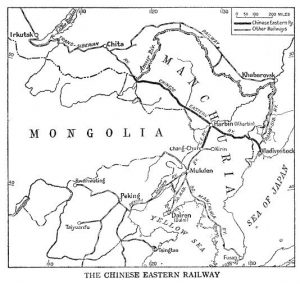 A bit of background history. The Chinese Eastern Railway (CER) was a bone of contention between Russia and China at that time. The story of the conflict surrounding the railway differs radically depending on the source: Soviet historians and contemporary historians who study Russian fiscal proceedings maintained and still maintain today that the Chinese military were to blame for rushing to take over the administration of the CER from the deserving USSR. Meanwhile, the Chinese contend that it was precisely the USSR that introduced conflict into the situation by consistently breaking the terms of the agreement that had been reached in 1924 about joint administration. What’s more, the railway was unprofitable; it was a deeply debt-ridden enterprise. For the actual ruler of Manchuria, Chairman Zhang Zuolin, the CER was a strategic conduit, and he was not about to pay for the use of the rail to transfer troops, nor could he. The Chinese military threatened to impose executions on members of the Soviet administration for its efforts to block the transfer of echelons of armed soldiers without tickets. After that Zhang Zuolin devoted all his efforts to methodically take over the conduit. It became painfully obvious that they could not sustain the route, the route would never be profitable under Soviet administration, plus in enemy territory its strategic importance would, for all purposes, be zero. Back in 1926 in Moscow a few clear-headed “party comrades” expressed an opinion that “we ought to straighten out the situation with the CER as quickly as possible, get rid of it like a callous on our foot.” (Stalin’s Letters to Molotov…p.77.) However, as was loudly proclaimed at the July (1926) plenum of the Central Committee, the Central Committee of the Communist Party and the All Union Communist Party (Bolshevik) by an ardent member of the Politburo, Nikolai Bukharin, “we have a problem with the CER, with the rail line, which is a principal strategic line and is our finger of revolution that has been stuck into China.” [Ibid.]
A bit of background history. The Chinese Eastern Railway (CER) was a bone of contention between Russia and China at that time. The story of the conflict surrounding the railway differs radically depending on the source: Soviet historians and contemporary historians who study Russian fiscal proceedings maintained and still maintain today that the Chinese military were to blame for rushing to take over the administration of the CER from the deserving USSR. Meanwhile, the Chinese contend that it was precisely the USSR that introduced conflict into the situation by consistently breaking the terms of the agreement that had been reached in 1924 about joint administration. What’s more, the railway was unprofitable; it was a deeply debt-ridden enterprise. For the actual ruler of Manchuria, Chairman Zhang Zuolin, the CER was a strategic conduit, and he was not about to pay for the use of the rail to transfer troops, nor could he. The Chinese military threatened to impose executions on members of the Soviet administration for its efforts to block the transfer of echelons of armed soldiers without tickets. After that Zhang Zuolin devoted all his efforts to methodically take over the conduit. It became painfully obvious that they could not sustain the route, the route would never be profitable under Soviet administration, plus in enemy territory its strategic importance would, for all purposes, be zero. Back in 1926 in Moscow a few clear-headed “party comrades” expressed an opinion that “we ought to straighten out the situation with the CER as quickly as possible, get rid of it like a callous on our foot.” (Stalin’s Letters to Molotov…p.77.) However, as was loudly proclaimed at the July (1926) plenum of the Central Committee, the Central Committee of the Communist Party and the All Union Communist Party (Bolshevik) by an ardent member of the Politburo, Nikolai Bukharin, “we have a problem with the CER, with the rail line, which is a principal strategic line and is our finger of revolution that has been stuck into China.” [Ibid.]
 Insofar as the Soviets had absolutely no desire to pull out their “revolutionary finger" out of China, Moscow tried to solve the problem Stalin-style: getting rid of the problem by getting rid of the person. On June 4, 1928 the train car in which Zhang Zuolin was traveling exploded near Mukden. A mine had been set up in a viaduct. Shortly thereafter the gravely wounded Chairman died in a Mukden hospital. Even though the Japanese were immediately blamed for the assassination attempt, today it is known that the assassination was executed by a resident INO OGPU agent [foreign division of the Soveit secret service] in Harbin, Naum Eitington and a resident agent at the foreign division administration (reconnaissance department) RCCA headquarters, Christopher Salnin. That did not solve the problem, though, because Zhang Zuolin, the son of the assassinated Zhang Tzolin refused to listen to the “convincing” arguments of the Kremlin. This was an example of organized “rebel acts” in action, introduced by Stalin. In the end, of course, it was decided to make use of direct force: at the boundary artillery forces, the cavalry, and the infantry were deployed. On 12 October, 1929 groups of special forces created by the Special Far East Army specifically for that campaign attacked and conquered the city of Lakhasusu (Tuntsian) in Khuiluntzian province and demolished half the fleet of the Chinese Sunhari flotilla. On 30 October, 1929, the ships of the Soviet Far East Navy flotilla deployed troops at the Sunhari estuary, finished off the rest of the Sunhari flotilla while two Soviet land regiments conquered the city of Futzin. A simultaneous incursion across the Soviet-Chinese border was carried out by Soviet troops into Prymorie, not far from the city Mishanfu. They massacred the Chinese soldiers, concluded a new agreement regarding the CER and formally established a joint administration. Soon the “revolutionary finger" had to come out of China though, because the Japanese conquered and subsequently occupied Manchuria.
“Lots of noise but no explosion”
At first the fervor those red subversives operating in the Far East possessed lived on despite the failed operation; that is, until they were caught in the act. On 7 July, 1932 the Consul at the Japanese Embassy in Moscow handed the NARKOMAT [Pepole’s Commissariat] of foreign affairs of the USSR a note from the Japanese government in which the following was said: a Korean named Lee who was arrested by Japanese authorities gave testimony that together with three other Koreans he had been recruited by the OGPU [Soviet secret service], supplied with explosives and dropped into Manchuria with a mission to detonate a series of bridges. According to the self-criticizing information given in Moscow by Terenti Derybas, supervisor of the official delegation of the OGPU responsible for the Far East, the operation he had organized had failed: “we made lots of noise but the bridge did not explode.” (Lubianka. Stalin and the VChC-GPU-OGPU-NKVD. Stalin Archives. Documents of senior party and government organs. January 1922-December 1936. M., International Fund “Democracy,” 2003, p. 807.) Moreover, the agents who were supposed to detonate the bridge were caught, and they admitted to everything.
Stalin, who was again vacationing in the south and already had information about the scandalous fiasco of the Chekists [agents of the “old” secret police] even before he received the official Japanese “advertisement,” wrote to his stand-in in Moscow, member of the Politburo and Secretary of the Central Committee, Kaganovich:
“The criminal violation of a directive authorized by the Central Committee is not to be disregarded without giving it due attention as regards the inadmissibility of acts of sabotage perpetrated by the OGPU and Razvedupr [Reconnaissance Management] in Manchuria. The arrest of Korean explosives experts and the participation of our agents in that operation creates (can create) a new danger in that provocations will be put to use in the conflict with Japan. Who needs that, if not the enemies of the Soviet authorities? It is essential to summon the supervisors of the Far East department to explain the situation and punish according to standard procedure those who have violated the interests of the USSR. No more enduring such abomination! Talk with Molotov and apply draconian measures against those criminals in the OGPU and the Razvedupra (there is great likelihood that those men are enemy agents among us). Demonstrate that in Moscow there is still rule of law and criminals are punished severely. Greetings! J. Stalin” (Stalin and Kaganovich. Correspondence. 1931-1936. M., ROSSPEN, 2001, p.208.)
Insofar as the Soviets had absolutely no desire to pull out their “revolutionary finger" out of China, Moscow tried to solve the problem Stalin-style: getting rid of the problem by getting rid of the person. On June 4, 1928 the train car in which Zhang Zuolin was traveling exploded near Mukden. A mine had been set up in a viaduct. Shortly thereafter the gravely wounded Chairman died in a Mukden hospital. Even though the Japanese were immediately blamed for the assassination attempt, today it is known that the assassination was executed by a resident INO OGPU agent [foreign division of the Soveit secret service] in Harbin, Naum Eitington and a resident agent at the foreign division administration (reconnaissance department) RCCA headquarters, Christopher Salnin. That did not solve the problem, though, because Zhang Zuolin, the son of the assassinated Zhang Tzolin refused to listen to the “convincing” arguments of the Kremlin. This was an example of organized “rebel acts” in action, introduced by Stalin. In the end, of course, it was decided to make use of direct force: at the boundary artillery forces, the cavalry, and the infantry were deployed. On 12 October, 1929 groups of special forces created by the Special Far East Army specifically for that campaign attacked and conquered the city of Lakhasusu (Tuntsian) in Khuiluntzian province and demolished half the fleet of the Chinese Sunhari flotilla. On 30 October, 1929, the ships of the Soviet Far East Navy flotilla deployed troops at the Sunhari estuary, finished off the rest of the Sunhari flotilla while two Soviet land regiments conquered the city of Futzin. A simultaneous incursion across the Soviet-Chinese border was carried out by Soviet troops into Prymorie, not far from the city Mishanfu. They massacred the Chinese soldiers, concluded a new agreement regarding the CER and formally established a joint administration. Soon the “revolutionary finger" had to come out of China though, because the Japanese conquered and subsequently occupied Manchuria.
“Lots of noise but no explosion”
At first the fervor those red subversives operating in the Far East possessed lived on despite the failed operation; that is, until they were caught in the act. On 7 July, 1932 the Consul at the Japanese Embassy in Moscow handed the NARKOMAT [Pepole’s Commissariat] of foreign affairs of the USSR a note from the Japanese government in which the following was said: a Korean named Lee who was arrested by Japanese authorities gave testimony that together with three other Koreans he had been recruited by the OGPU [Soviet secret service], supplied with explosives and dropped into Manchuria with a mission to detonate a series of bridges. According to the self-criticizing information given in Moscow by Terenti Derybas, supervisor of the official delegation of the OGPU responsible for the Far East, the operation he had organized had failed: “we made lots of noise but the bridge did not explode.” (Lubianka. Stalin and the VChC-GPU-OGPU-NKVD. Stalin Archives. Documents of senior party and government organs. January 1922-December 1936. M., International Fund “Democracy,” 2003, p. 807.) Moreover, the agents who were supposed to detonate the bridge were caught, and they admitted to everything.
Stalin, who was again vacationing in the south and already had information about the scandalous fiasco of the Chekists [agents of the “old” secret police] even before he received the official Japanese “advertisement,” wrote to his stand-in in Moscow, member of the Politburo and Secretary of the Central Committee, Kaganovich:
“The criminal violation of a directive authorized by the Central Committee is not to be disregarded without giving it due attention as regards the inadmissibility of acts of sabotage perpetrated by the OGPU and Razvedupr [Reconnaissance Management] in Manchuria. The arrest of Korean explosives experts and the participation of our agents in that operation creates (can create) a new danger in that provocations will be put to use in the conflict with Japan. Who needs that, if not the enemies of the Soviet authorities? It is essential to summon the supervisors of the Far East department to explain the situation and punish according to standard procedure those who have violated the interests of the USSR. No more enduring such abomination! Talk with Molotov and apply draconian measures against those criminals in the OGPU and the Razvedupra (there is great likelihood that those men are enemy agents among us). Demonstrate that in Moscow there is still rule of law and criminals are punished severely. Greetings! J. Stalin” (Stalin and Kaganovich. Correspondence. 1931-1936. M., ROSSPEN, 2001, p.208.)


